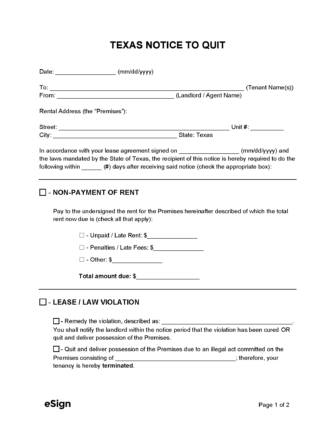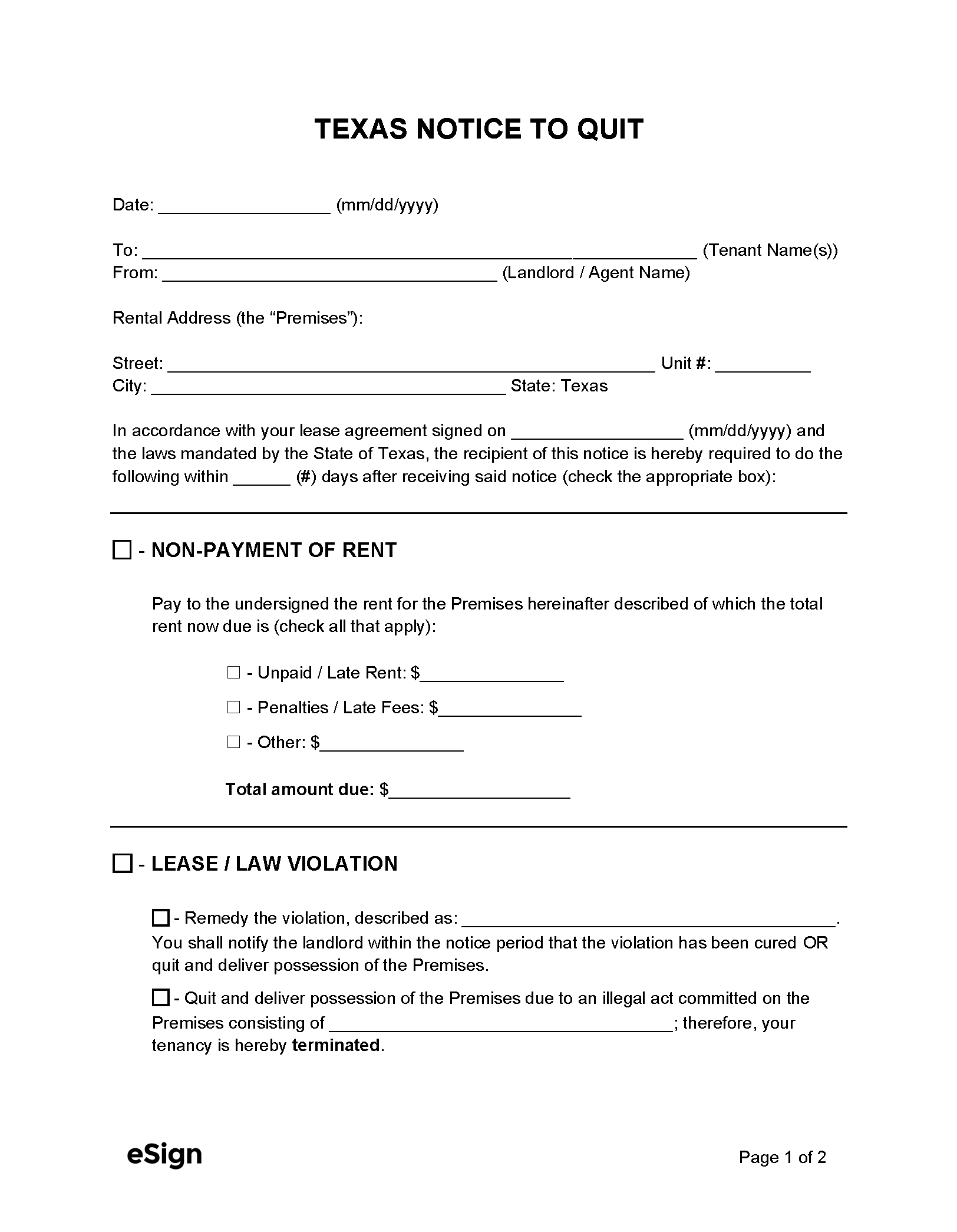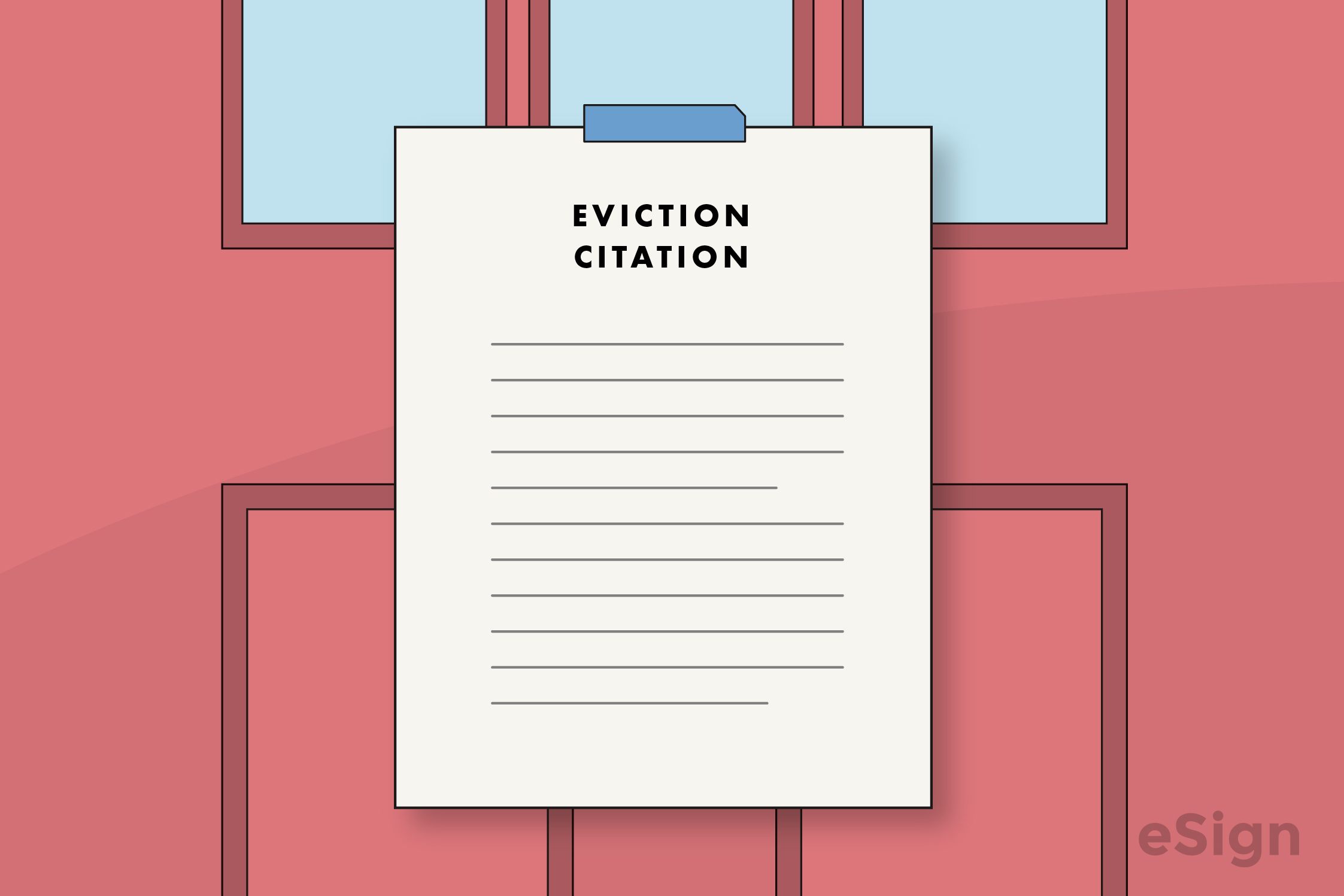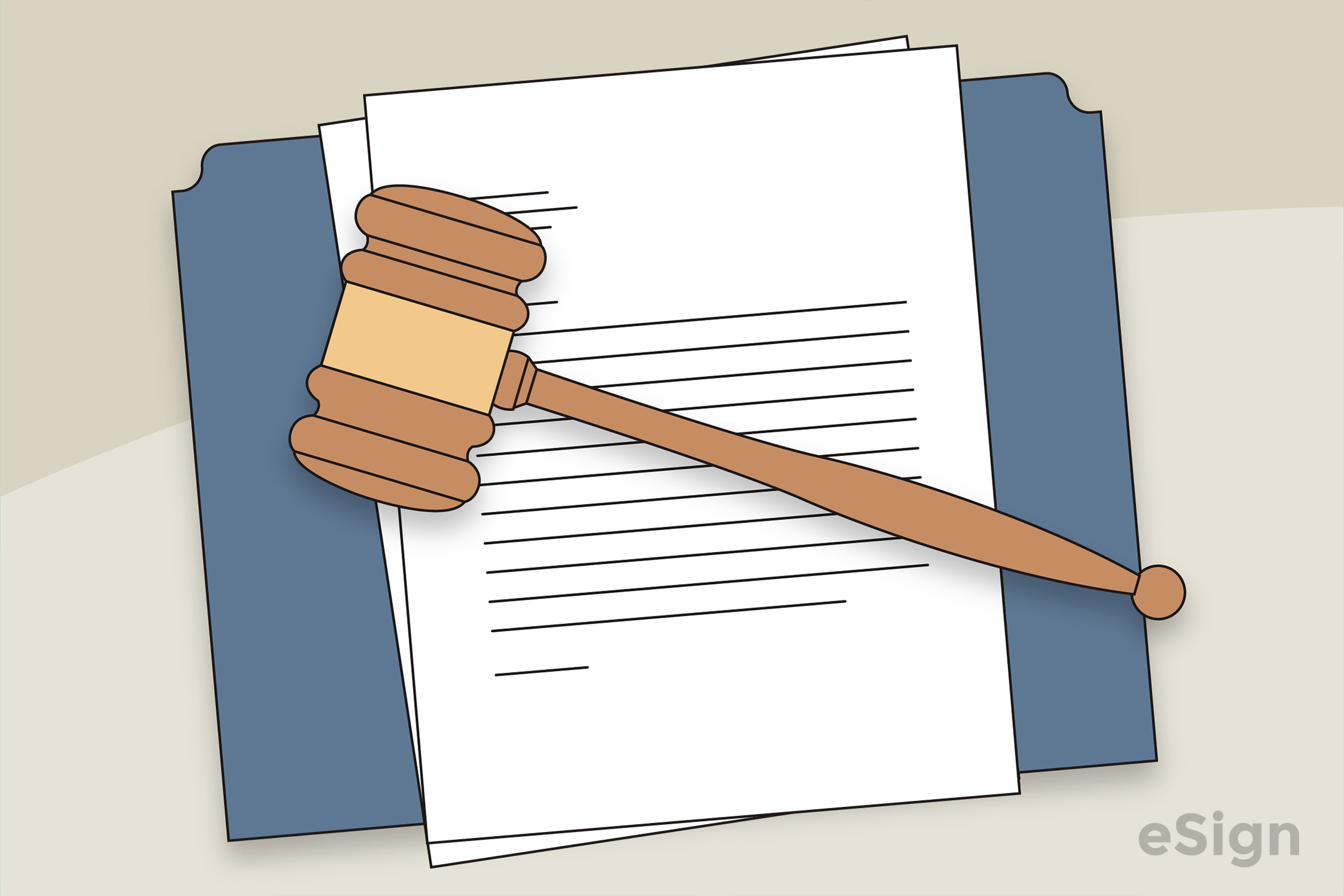Eviction Notices: By Type (3)
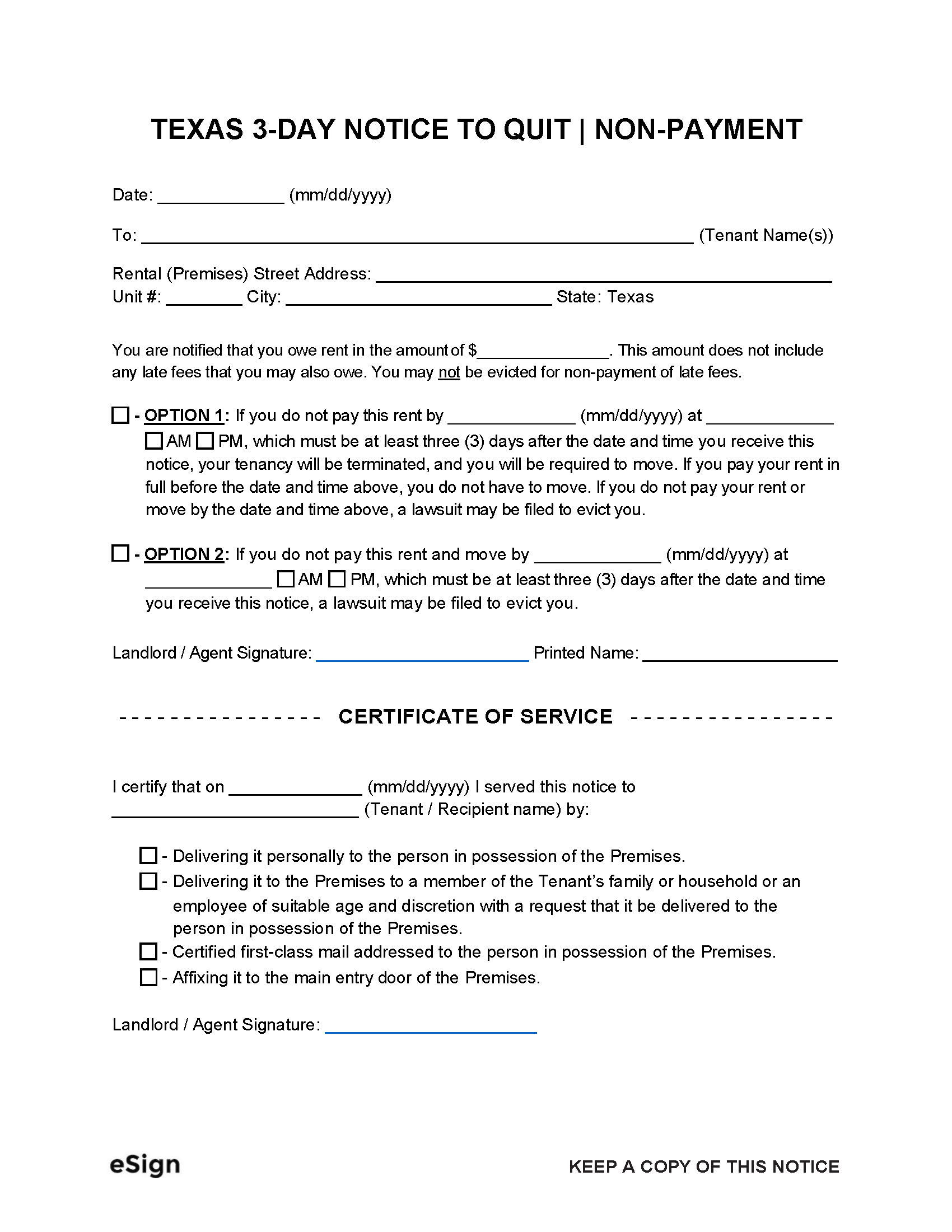 3-Day Notice to Quit | Non-Payment – Notifies a tenant who’s late on rent that they have three days to pay or their lease will end. 3-Day Notice to Quit | Non-Payment – Notifies a tenant who’s late on rent that they have three days to pay or their lease will end.
Download: PDF, Word (.docx), OpenDocument |
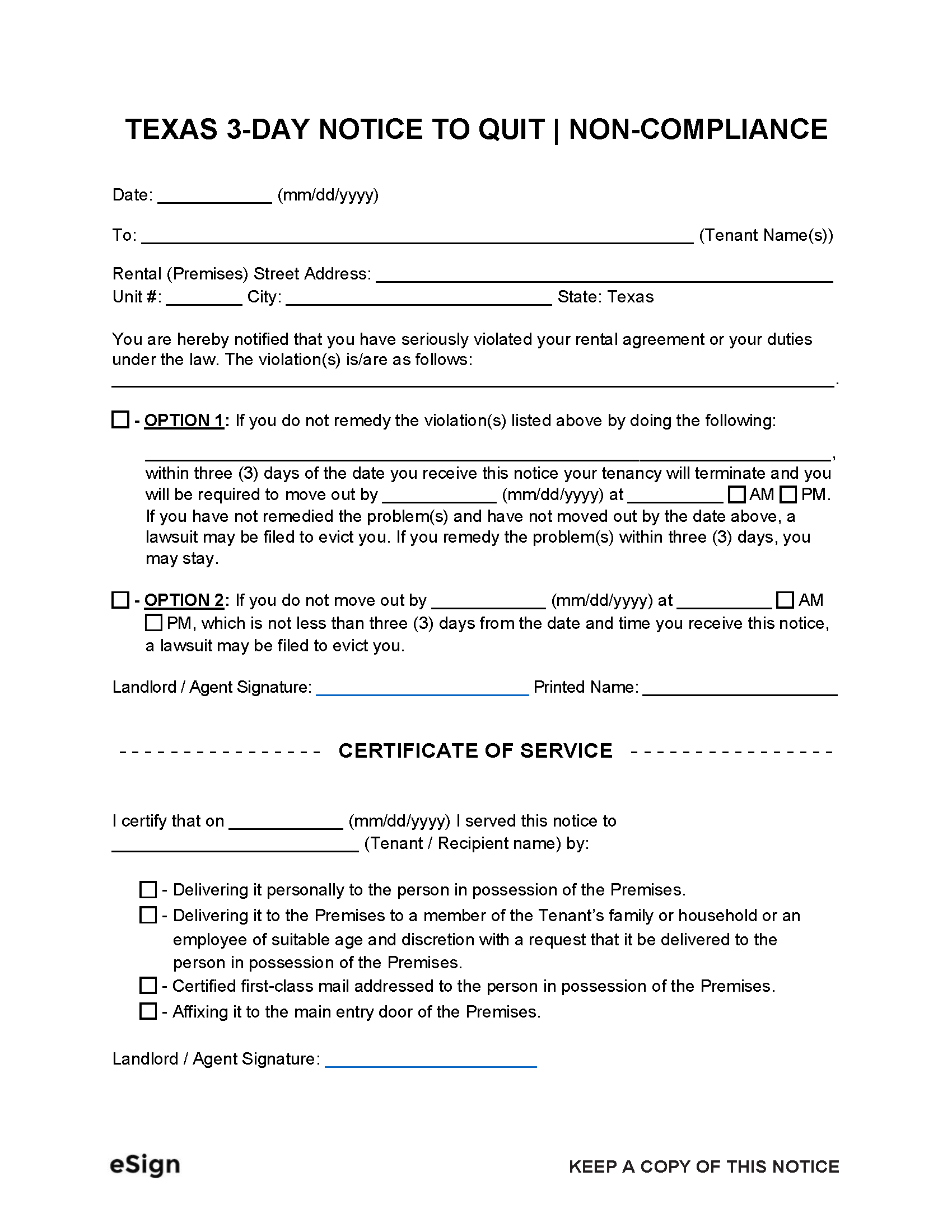 3-Day Notice to Quit | Non-Compliance – Informs a tenant of the deadline by which they must correct a lease violation or move out. 3-Day Notice to Quit | Non-Compliance – Informs a tenant of the deadline by which they must correct a lease violation or move out.
Download: PDF, Word (.docx), OpenDocument |
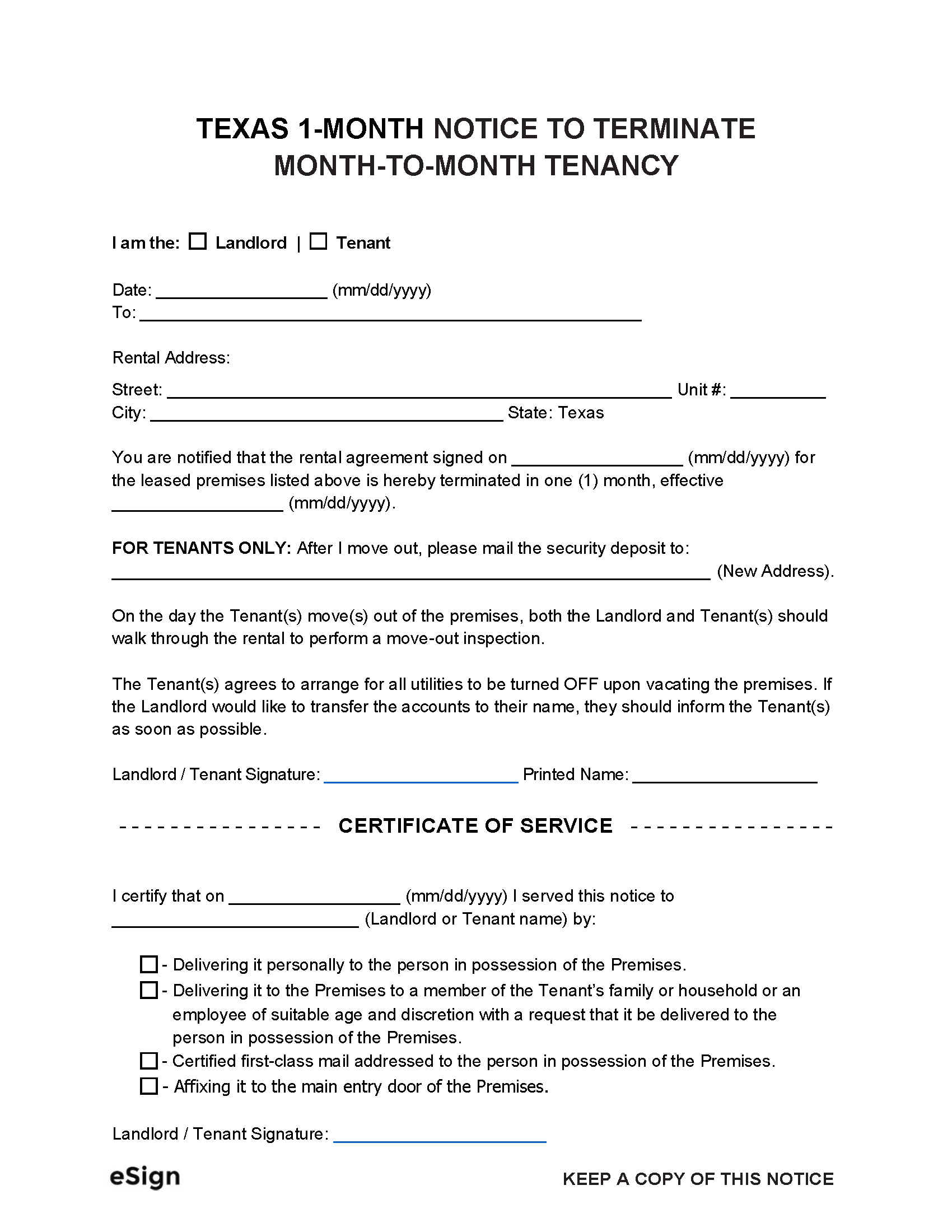 1-Month Notice to Terminate | Month-to-Month Lease – Terminates a month-to-month tenancy one month after it is served. 1-Month Notice to Terminate | Month-to-Month Lease – Terminates a month-to-month tenancy one month after it is served.
Download: PDF, Word (.docx), OpenDocument |
Notices Requirements
How to Evict a Tenant in Texas
Step 1 – Notice to Quit
Before filing an eviction suit, the landlord must serve a notice to quit on the tenant. The notice can be delivered in person, sent by mail, or posted inside the main entrance door.
Step 2 – Filing Eviction Suit
The landlord can file a Petition for Eviction with the Justice of the Peace Court (in person or online) if the tenant does not vacate or resolve the problem by the end of the notice period. The court will issue a Citation, which must be served on the tenant by a sheriff or constable (service fees apply).
Step 3 – Tenant’s Answer
The tenant has the option to file an Answer with the court to respond to the landlord’s claims (or provide the court with their response by phone or in person). After filing, the tenant must serve the Answer on the landlord in person, by mail, fax, or by email (if the landlord has agreed to email service in writing).
Step 4 – Court Hearing
The parties will defend their claims at the hearing. If the tenant does not attend, the landlord will likely receive a Default Judgment, requiring that the tenant vacate the premises.
Step 5 – Verdict
If both parties attend the hearing and the judge rules in favor of the landlord, the tenant must quit the premises within five days or appeal the case. If the tenant wins the case, the landlord may appeal the case within five days of the verdict.
Step 6 – Writ of Possession
If the tenant does not move out or appeal the case, the landlord can submit a Request for a Writ of Possession to the court. Once approved, the court will have the constable serve a Writ of Possession on the tenant (service fees apply). After the service, the tenant has 24 hours to vacate the premises or they will be removed by the sheriff or constable.
Court Forms + Resources
Forms
- Answer
- Signed by: Tenant
- Citation
- Signed by: Justice of the Peace
- Default Judgment
- Signed by: Justice of the Peace
- Petition for Eviction
- Signed by: Landlord, Notary/Court Clerk
- Request for a Writ of Possession
- Signed by: Landlord
- Writ of Possession
- Signed by: Justice of the Peace, Officer
Resources
